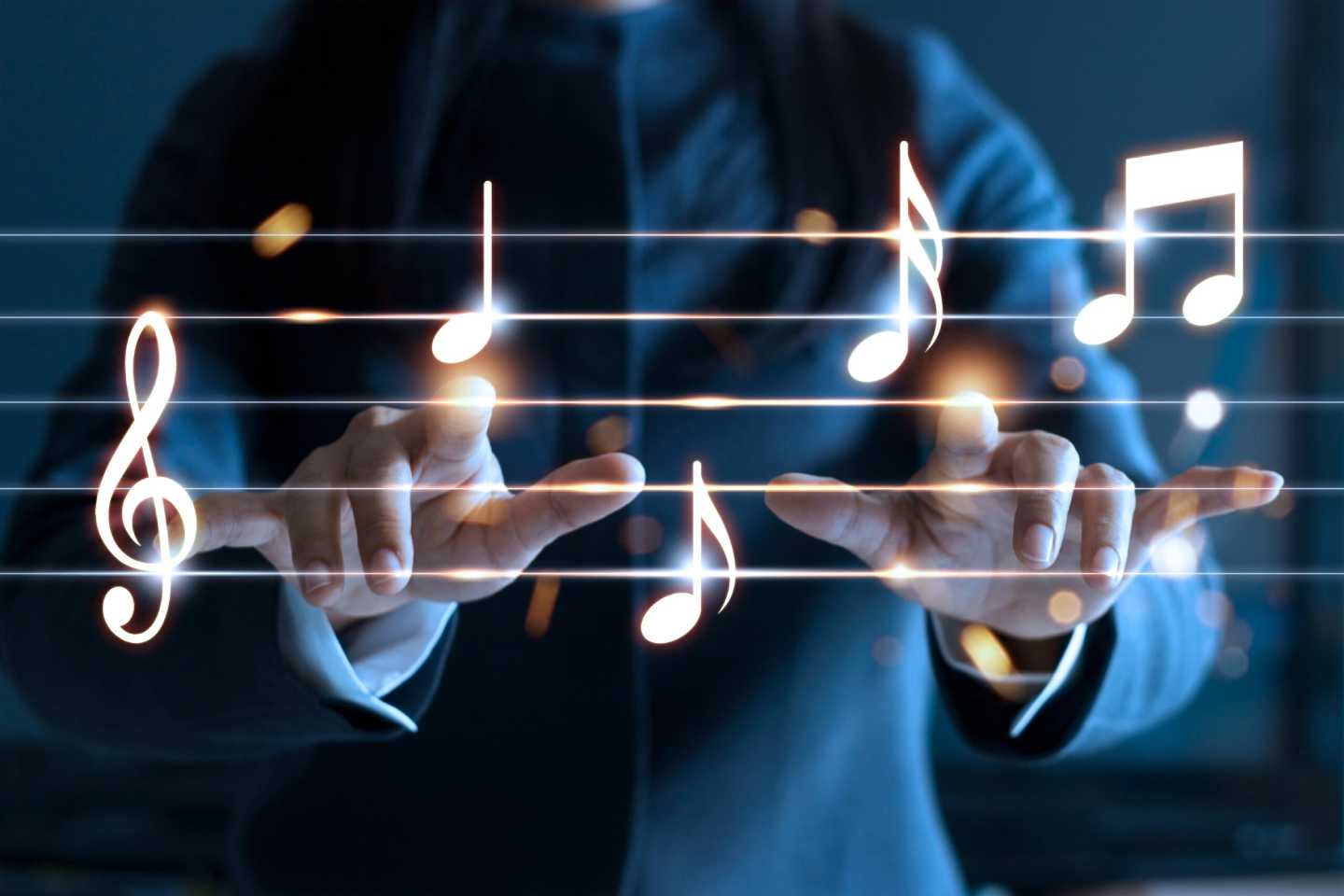Research suggests that listening to music is good for overall health. It can enhance happiness, lower stress and boost learning and memorization, among other benefits. Darci Zook proclaims music grants her a “euphoric peace.” The 29-year-old Springfield, Illinois resident has never actually ‘heard’ music though. She is deaf but her connection with sound is, well, loud and clear. “My ears and body pick up different sound waves, vibrations and low notes,” Darci says, explaining that her other senses are heightened by music. She also loves to study lyrics and analyze the creative metaphors of songs.
Darci insists being deaf doesn’t (and shouldn’t) hinder her ability to enjoy music; and science agrees. Dr. Dean Shibata, a professor in the Department of Radiology at the University of Washington, published his music-related findings. “The brain is incredibly adaptable. In someone who is deaf, the young brain takes advantage of valuable real estate in the brain by processing vibrations in the part of the brain that would otherwise be used to process sound,” Shibata shares.
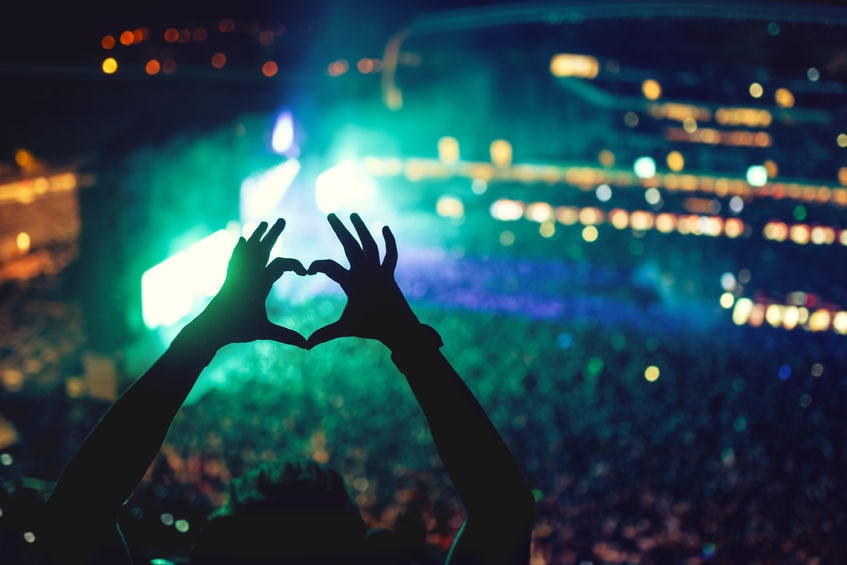
However, Darci’s experience is unfortunately obstructed by inadequate access. Approximately 37.5 million Americans – an equivalent to 15 percent of American adults – have trouble hearing, according to the National Institute on Deafness and Other Communication Disorders. Yet accessibility remains a barrier for the deaf and hard of hearing community – even on a daily basis at schools, hospitals, workplaces and, impacting Darci’s passion, entertainment venues. The Americans with Disabilities Act (ADA) made significant improvements; but the law doesn’t exactly solve all challenges, so those in the deaf community have to self-advocate. For example, after buying a concert ticket, Darci must proactively request an American Sign Language (ASL) interpreter (sometimes three to six months in advance), educate uninformed venue personnel about her inclusive rights, wait for approval/denial and hope the hired interpreter’s skill level is satisfactory. “Studies show that music has a powerful impact on everyone, and that includes the deaf and hard of hearing community. Yet, there is not enough exposure and awareness when it comes to providing accessibility. Because of that, I am passionate about spreading awareness and educating people for our future deaf and hard of hearing children and community to be able to enjoy the experience without facing constant barriers,” Darci declares.
Interpreters and Artists Tune In
A uniquely focused group of ASL interpreters specializing in music are also championing accessibility, specifically within the music and entertainment industries. ASL is an official language with precise manual parameters, including hand shape, palm orientation, hand location/placement, hand movement and non-manual markers which, traditionally, include somewhat limited motion of the shoulders, head and face. In recent years, however, online videos have gone viral of ASL interpreters enthusiastically signing music using vibrant, unconventional body language and gestures. These interpreters respect the language and its parameters, and are simply enhancing its communication impact when appropriate (as with music).
The ASL music “movement” aims to harmoniously bridge a hearing-centric experience over to a visually-centric experience. This language evolution is pioneered, in part, by Amber Galloway Gallego and her Texas-based company, Amber G. Productions. Amber’s team, comprised of about a dozen dynamic ASL music interpreters (both deaf and hearing-abled), travel nationwide to interpret for chart-topping artists (like Adele, Drake and Red Hot Chili Peppers, to name a few); plus, they focus on enhancing the musical experience of deaf festival-goers. “I do at least forty to fifty events per year, and that includes festivals which may include four shows a day,” says Kelly Kurdi, a multilingual interpreter with Amber G. Productions who studied at Gallaudet University, an institution for the deaf. Amber suggests that solely signing a song’s words and, then, pausing during instrumentals is an injustice. She’s teaching others how to fully immerse deaf music lovers through expression and emotion ─ and without missing a beat in a drum solo! Kelly demonstrates in the following video:
“Interpreters of music in the past just signed the lyrics using a lot of the same sort of [language] parameters as when we are doing platform interpreting; so sort of staying still and standing in one place. When there would be an instrument playing, they would sign the word ‘music’ and point over to the guitar soloist, for example,” Kelly, who is actually hearing-abled, reiterates. That certainly doesn’t fully communicate to deaf fans a song’s entirety. Now, to the contrary, “We indicate all of the instruments that are being played and the intensity level using our bodies. We see the music as having multiple layers, and we’re responsible for bringing all of that… not only the lyrics, which is what people normally think of, but also the tone, the emotion, the rhythm,” Kelly describes. A skilled ASL music interpreter customizes body language and vocabulary to suit an artist therefore, with the right execution, a deaf listener should be able to see and feel the difference between, for instance, a song by The Weeknd (a masculine R&B vibe) versus a song by Dolly Parton (a feminine country feel).Darci loves the new approach to music interpreting and has even specifically requested interpreters from Amber G. Productions for an event. “When an ASL interpreter is a part of this beautiful journey, the connection is immediate and life-changing,” she tells AmeriDisability. “The deaf person depends on us to be at the same caliber of the artist,” Kelly says. However, she acknowledges that interpreters themselves uniquely impact the experience. “Each song is going to be interpreted differently because interpreting in and of itself is an art… different sign choices, a different flow,” she says.
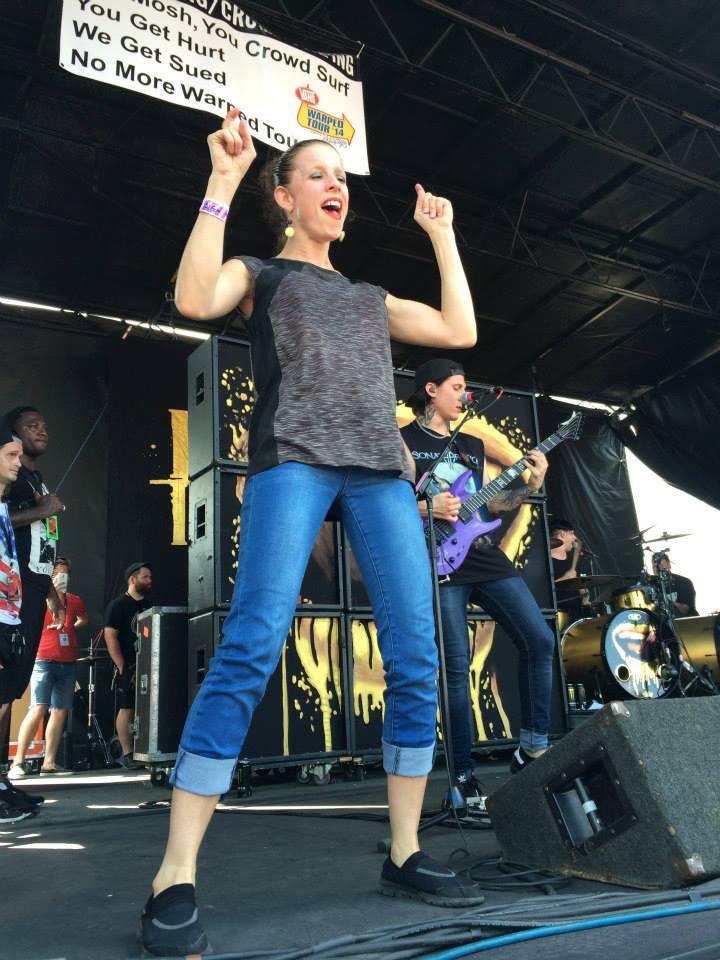
There is a lot of prep work, research, memorization and grunt work that happens behind the scenes. “We also have to fight for access and deal with venues for what they provide in terms of interpreter and client placement, sound packs, receiving a set list or material before the show (if we are lucky), etc.,” says Joann Benfield, another professional with Amber G. Productions. “Being a deaf interpreter myself (I am deaf and a music/performance interpreter), there is an additional layer that I have to incorporate in my prep work. I have to memorize my material more than my hearing counterparts because I do not solely depend on my hearing to do the work for me. I also have to be able to work with a feeder (a team interpreter that feeds missed information to me that helps me continue interpreting without stopping) which is another skill level of being an interpreter,” Joann explains.
Joann is accustomed to working alongside music artists but, in 2014, she was in the limelight (with Amber and another ASL interpreter, Holly Maniatty) thanks to an appearance on Jimmy Kimmel Live!. During a “sign language rap battle,” the three interpreters faced off as rapper Whiz Khalifa performed his song “Black and Yellow.” [Watch the video here.] Interpreting the rap genre is, of course, more challenging because it demands rapid and creative wordplay. “You have to truncate your signs to be able to keep up with the beat to make sure it’s looking like rap,” Amber shared in a video interview.
Accessibility Takes Center Stage
“I really enjoy the opportunities to talk to artists about what we do and the fact that they have deaf fans,” Kelly offers. In a perfect world, an interpreter would always be on stage just like any other part of the band. The music industry isn’t quite there yet. But, perhaps, the writing is on the wall.
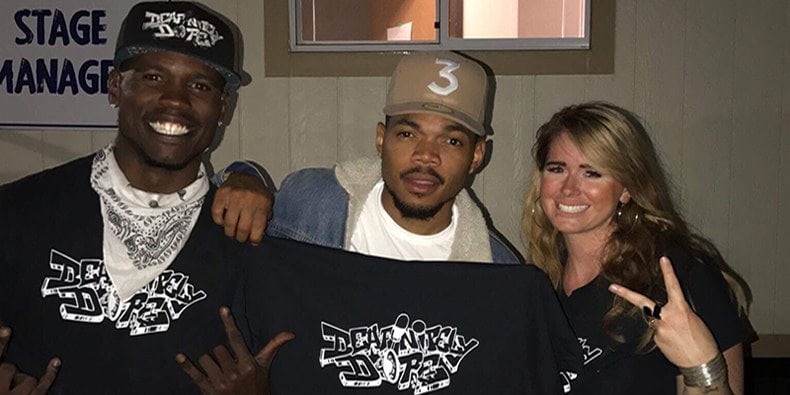
While a growing number of performers are incorporating interpreters at shows, in 2017, Chance the Rapper became the first mainstream rapper to hire a tour ASL music interpreter and, thus, eliminating the need for his deaf fans to issue a laborious venue request. Along with Matt Maxey, owner of the music interpretation company DEAFinitely Dope, Kelly joined Chance on tour ─ something she regards as an epic career highlight. Dedicated to promoting inclusion, Chance also gifted fifty front row tickets free of charge to deaf and hard of hearing fans. Check out this video of Kelly and Matt teaching Chance how to sign his song “Blessings.”
Striking a Change-Making Chord
Like all languages, ASL is a means of communication but also a means of art expression. With a demand for more inclusive shows and videos, ASL music interpreters are working to make this musical art form more accessible and more enjoyable. Some within the deaf community find the attention surrounding music interpretation (specifically by hearing-abled) to be a bit controversial. In their book Deaf Culture: Exploring Deaf Communities in the United States, authors Irene W. Leigh, Jean F. Andrews and Raychelle Harris even described it as unintentional language and cultural appropriation. For the majority of others, including the celebrated music interpreters and their fans, the true controversy is that this level of advocating is still necessary – three decades after ADA became law.
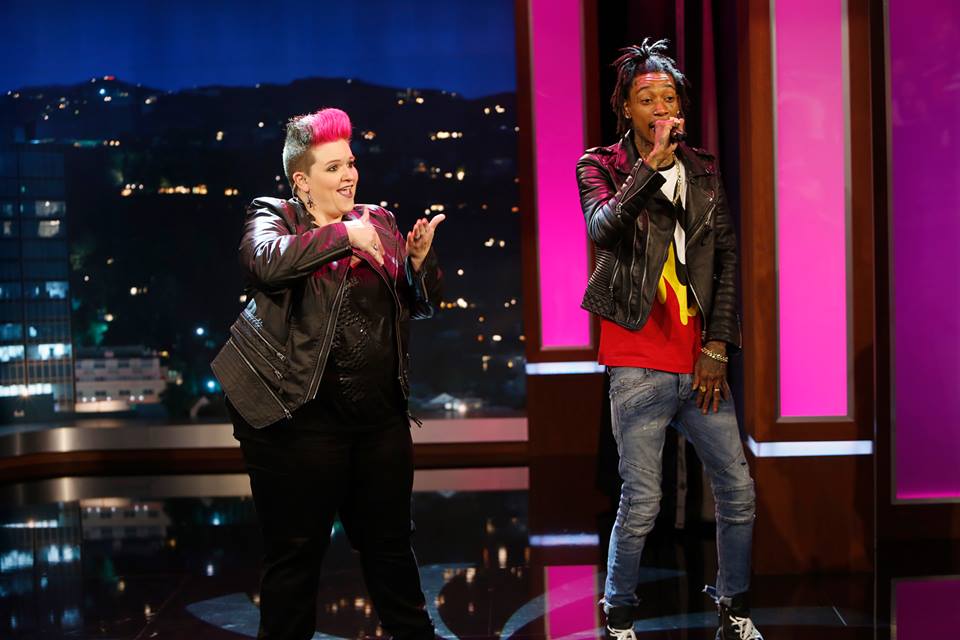
Encore of Inclusion
“Music is inclusive and it is meant for everyone to enjoy. There is absolutely no reason to deprive deaf people from experiencing a concert,” Darci affirms. Joann agrees, “Fighting for access has become the new norm within our work [as music interpreters]. It is frustrating and upsetting that we have to constantly deal with this almost everywhere we go. For those of us who are passionate about what we do, we have naturally become advocates for the deaf community because we want to ensure that they have equal access to the concert or performance as their hearing counterparts.”
Engineers and technologist are working to improve accessibility too. Not Impossible Labs created an innovative wearable technology called Music: Not Impossible. With a goal to enhance the sensory experience for deaf music listeners, the technology translates sound onto the skin through vibration. According to the company’s website, “the battery-powered wireless wearable includes a harness, two wristbands and two ankle bands, supplying 24 distinct areas of vibration across the user’s body, or what we call a ‘Surround Body Experience.’ Each element receives complex polyphonic musical expressions across the skin. Wearers may adjust the intensity of vibrations, which are visually represented via customizable color LED lights.”
To help further this accessibility conversation, Darci urges fellow music lovers to get involved with their state’s Deaf and Hard of Hearing Commission; and, if support is needed to navigate an accessibility barrier, contact the National Association of the Deaf. If you are interested in studying Amber’s style of ASL music interpretation, reserve a spot at the ASL Music Camp. The immersive week-long session is led by passionate ASL music interpreters, artists and dance instructors.
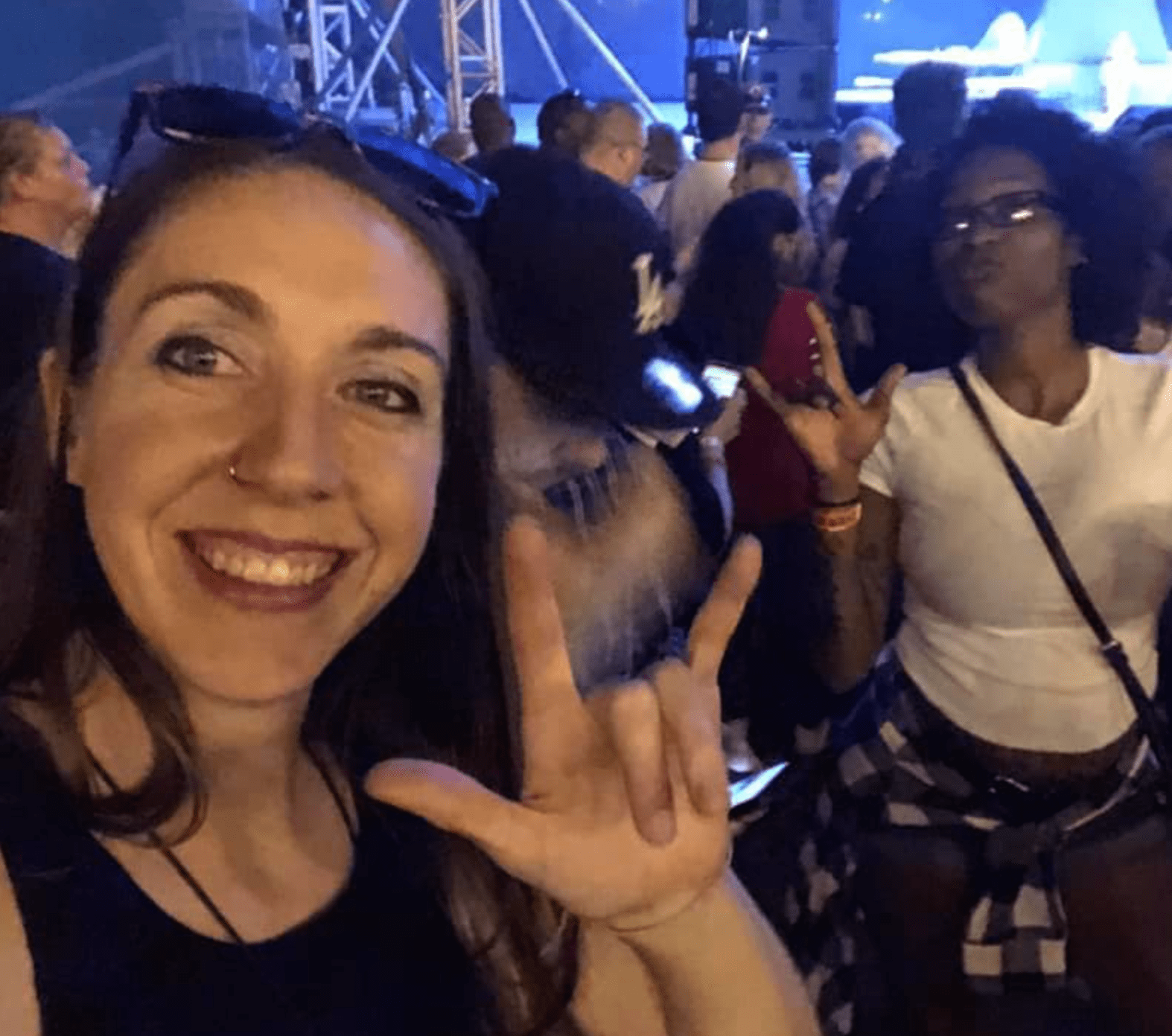
Looking for similar content from AmeriDisability? You may enjoy reading “Tune into the Benefits of Music Therapy.”
Nancy DeVault is an award-winning writer/editor contributing to local and national publications.Her storytelling spans a wide range of topics, including charity, disability,food, health, lifestyle, parenting, relationships and travel. Married with two kiddos, Nancy describes herself as a lover of the outdoors, fitness, news,traveling and binge reading magazines while sipping coffee.
Feature photo source: Shutterstock




